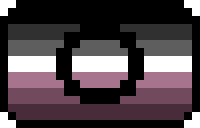
M.R.K.H.
(also: mayer-rokitansky-küster-hauser syndrome, müllerian agenesis)

Table of Contents

General Information
MRKH results when someone's Müllerian ducts (which typically become the uterus & upper portion of the vagina during fetal development) do not develop in the typical way. People with MRKH have XX chromosomes. They are usually born with a vulva and either no vagina, or a vagina that is shorter that is typical. They may have a partial uterus (uterine remnant) or no uterus. They usually do not have a cervix.
People with MRKH usually have ovaries that produce estrogen, and will generally develop the secondary sex characteristics associated with a typcial estrogen-based puberty. They usually do not menstruate, but may experience cyclic pain if they have a uterine remnant with endrometrial lining. They can develop menstruation-related conditions such as endometriosis.

Müllerian Agenesis Flag


Type 1 MRKH
In "Type 1" MRKH, the person will only have the variations listed in the above section.

Type 2 MRKH
Someone with "Type 2" MRKH will have additional differences in other parts of their body such as their fallopian tubes, spine, heart, or kidneys. An example of of Type 2 MRKH is known as Müllerian agenesis, Renal agenesis, Cervicothoracic Somite (MURCS) Association, where someone’s kidneys do not develop typically and they may have scoliosis or fused vertebrae in addition to the usual features of MRKH.

External Links
The resources below have been provided for education, information sourcing, and entertainment purposes. The views expressed in these videos, websites, etc, do not inherently reflect those of The Transgender Dictionary. These resources are not sponsored, nor endorsed.

Additional Resources

